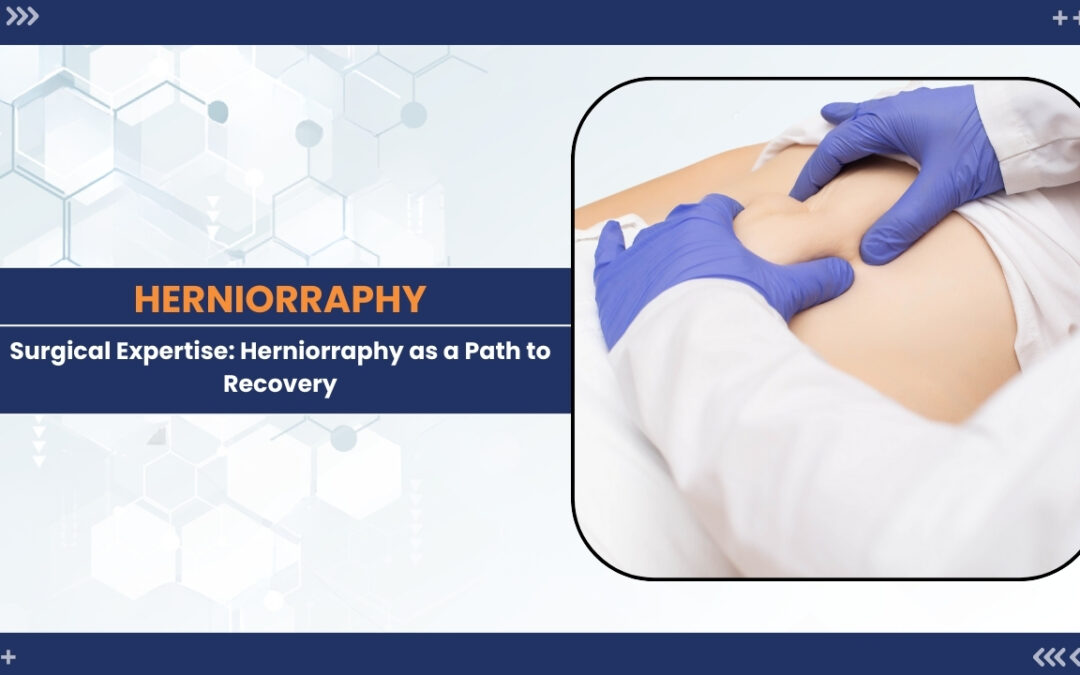Herniorrhaphy’s Impact on Auditory Wellness
Recovery Process of Herniorrhaphy’s
Immediate Postoperative Period:
-
- Hospital Stay: In many cases, herniorrhaphy is performed as an outpatient procedure, and patients can return home on the same day. However, more complex cases may require a short hospital stay.
- Pain Management: Pain medications are often prescribed to manage postoperative discomfort.
- Rest: Adequate rest is crucial in the initial days to allow the body to heal
- .First Few Weeks:
- Activity Restrictions: Patients are typically advised to avoid heavy lifting and strenuous activities during the first few weeks.
- Gradual Resumption of Activities: Light activities such as walking are encouraged, but it’s essential to avoid putting excessive strain on the surgical site.
-
- Wound Care:
- Incision Care: Follow the surgeon’s instructions for keeping the incision site clean and dry.
- Monitoring for Infection: Watch for signs of infection, such as increased redness, swelling, or drainage from the incision.
- Wound Care:
- Diet and Hydration:
- Hydration: Drink plenty of fluids to stay hydrated.
- Balanced Diet: Follow any dietary recommendations provided by your healthcare team to promote healing.
- Follow-up Appointments:
- Scheduled Check-ups: Attend all scheduled follow-up appointments with your surgeon to monitor your recovery progress.
- Address Concerns: Discuss any concerns or unusual symptoms with your healthcare provider promptly.
- Resumption of Regular Activities:
- Gradual Return to Normalcy: As the weeks progress and with your surgeon’s approval, you can gradually resume normal activities and exercises.
- Avoid Strain: Continued avoidance of heavy lifting and strenuous activities is often advised for an extended period.
Surgical Procedure for Herniorrhaphy:
Herniorrhaphy, a pivotal surgical intervention for hernias, commences with the administration of anesthesia, ensuring the patient’s comfort throughout the procedure. The surgeon then strategically makes an incision near the hernia site, granting access to the affected area. With precision, the protruding organ is gently maneuvered back into the abdominal cavity, addressing the hernia at its core.
Following reduction, the weakened tissue undergoes meticulous repair, either through the application of stitches or the integration of mesh, fortifying the area against potential recurrence. The surgeon carefully closes the incision using stitches, staples, or adhesive strips, optimizing the wound-healing process. Postoperatively, patients are closely monitored for stable vital signs, provided with effective pain management, and often released to return home on the same day.The comprehensive success of herniorrhaphy hinges on adherence to pre- and postoperative guidelines.
Regular follow-up appointments are essential to track healing progress and ensure optimal outcomes. Effective communication with healthcare providers is paramount, facilitating a collaborative approach to the delicate interplay of tissues and ultimately securing lasting results in herniorrhaphy patients.
Ensuring Comfort During Herniorrhaphy Recovery:
Ensuring comfort during herniorrhaphy recovery is crucial for a smooth and successful healing process. After undergoing hernia repair surgery, patients often experience discomfort, swelling, and limited mobility in the affected area. To enhance comfort, it is essential to follow postoperative care instructions diligently. This may include managing pain with prescribed medications, applying ice packs to reduce swelling, and adhering to any activity restrictions outlined by the surgeon. Wearing a supportive abdominal binder can provide additional comfort and stability, aiding in the prevention of strain on the surgical site.
Maintaining good hygiene and regularly changing dressings can minimize the risk of infection, contributing to a more comfortable recovery. Staying hydrated, consuming a balanced diet rich in nutrients, and gradually reintroducing physical activities as advised by the medical team also play pivotal roles in ensuring overall well-being during herniorrhaphy recovery. Effective communication with healthcare professionals and a commitment to self-care are key elements in creating a comfortable and successful recovery experience for individuals undergoing hernia repair.
Conclusion:
In conclusion, Herniorrhaphy emerges as a transformative solution for individuals grappling with the challenges of hernias. This surgical intervention offers not only relief from discomfort and pain but also a path to restored functionality and improved quality of life. By exploring the intricacies of Herniorrhaphy in this blog, we’ve shed light on the significance of early detection, prompt intervention, and the various techniques involved.
Whether opting for open or laparoscopic approaches, understanding the procedure’s nuances empowers individuals to make informed decisions about their health. Our comprehensive guide underscores the importance of postoperative care, rehabilitation, and regular follow-ups for a successful recovery. Embrace the journey towards a hernia-free life with the knowledge gained from this exploration of Herniorrhaphy, ensuring a confident stride towards lasting well-being at our Wellness Hospitals


